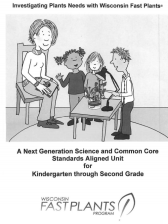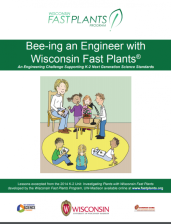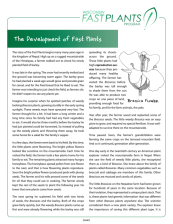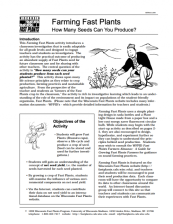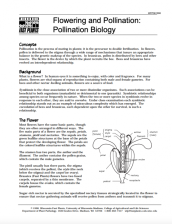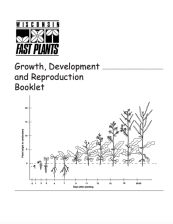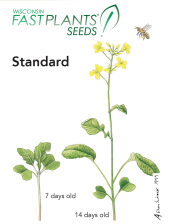Browse Resources
(2 classifications) (18 resources)
Educational Resources -- Grade Level: Elementary
| Classic Elementary Resources (developed before the year 2010)
(4)
Current Elementary Resources (12) |
Resources | |
|---|---|
Download this comprehensive, 60-page elementary unit that was co-developed by the Fast Plants Program and Emily Miller (ELA/science elementary science education specialist) who helped author the Next Generation Science Standards) as an exemplar for supporting three-dimensional learning. Developed in...
Download this complete set of lessons for an elementary, NGSS-aligned inquiry that foregrounds engineering practices. During the days that are supported by this investigation, students observe flowers on their 14 to 16 day old Fast Plants along with bee structures, learning to connect how the shape...
This is "The Story of Fast Plants" - a short story of the origins of Brassicas and the work of Dr. Paul Williams, developing Brassica rapa. Reading level ~7th grade.
This Farming Fast Plants activity introduces a classroom investigation that is easily adaptable for all grade levels and designed to engage teachers and students as investigators. The activity has the practical outcome of producing an abundant supply of Fast Plants seed for future classroom use and...
This pdf includes background information and an activity for engaging students in the processes that occur during pollination, fertilization and seed development in Fast Plants. Pollination is explained and illustrated and an activity for students to pollinate Fast Plants and observe reproductive...
An article written for children, this reading explains the role of plants as producers. It is written at a grade 4-5 reading level, and it is a good supplement to the evidence that students can observe and record through experimentation with photosynthesis.
A 32-page booklet, containing complete instructions for activities at each life cycle stage. The booklet also includes important background information about plant physiology and how to grow Fast Plants. A Growth, Development and Reproduction kit is available. You can also conduct all the...
This is a page on the Fast Plants website, describing the Standard variety of Wisconsin Fast Plants (Brassica rapa). This page includes suggestions for investigations and teaching applications using this seed variety, including use as a model organism to teach about the plant life cycle and plant...
| |
| ← Previous | |
